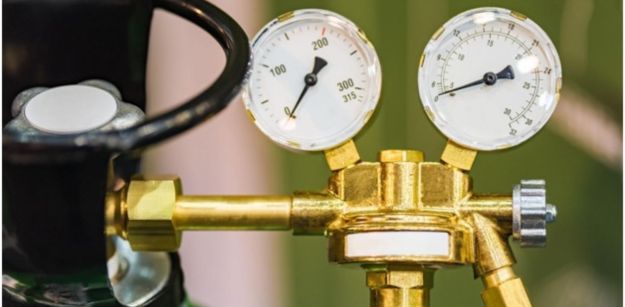Liquid Petroleum Gas (LPG) is an essential energy source for various applications, from heating and cooking to powering vehicles and industrial processes. LPG must be stored and transported safely and efficiently as a versatile, eco-friendly fuel. To guarantee the safety of both consumers and the environment, rigorous quality testing of LPG bottles is imperative.


This comprehensive guide will delve into the various aspects of quality testing for LPG bottles, exploring the importance, methods, and regulatory standards governing this vital process.
The Significance of Quality Testing
Quality testing of LPG bottles is paramount for several reasons:
- Safety: Ensuring LPG bottles’ structural integrity and leak-proof nature is essential to prevent accidents, fires, and explosions resulting from gas leaks or faulty containers.
- Environmental Impact: A leaking LPG bottle poses a safety risk and contributes to air pollution and greenhouse gas emissions. Regular quality testing helps minimise ecological damage.
- Consumer Confidence: Consumers need to trust the LPG they use. Rigorous quality testing builds confidence in the product, assuring users that they use a safe and reliable energy source.
- Compliance: Regulatory authorities often mandate LPG bottle quality testing to ensure manufacturers and distributors adhere to safety standards and best practices.
Regulatory Standards
Quality LPG bottle test is subject to stringent regulations and standards in most countries. These regulations outline the specific requirements that LPG bottles must meet to ensure safety and reliability. Here are some of the key regulatory standards governing LPG bottle quality testing:
- ISO 22991: This international standard specifies requirements for the inspection and requalification of LPG composite and fully wrapped composite gas cylinders. It covers various aspects, including visual inspection, ultrasonic examination, and hydraulic pressure testing.
- DOT (Department of Transportation) Regulations: In the United States, LPG cylinders must adhere to DOT regulations, which include periodic requalification testing, such as hydrostatic testing, visual inspection, and pressure relief valve testing.
- European Standard EN 1442: This standard applies to welded steel LPG cylinders and covers various aspects of testing, including design, manufacture, and periodic inspection and testing.
- AS/NZS 1596: AS/NZS 1596 provides guidelines for storing and handling LPG in Australia and New Zealand. It includes requirements for LPG cylinder testing, maintenance, and inspection.
Critical Quality Tests for LPG Bottles
1. Visual Inspection
Visual inspection is the initial step in assessing the condition of an LPG bottle. During this test, qualified inspectors examine the external surface of the bottle for signs of corrosion, damage, or wear. Any visible defects, such as dents, rust, or gouges, are noted and addressed accordingly.
2. Ultrasonic Examination
Ultrasonic examination is a non-destructive testing method to detect internal defects in LPG bottles, such as thinning cylinder walls due to corrosion. Ultrasonic waves are directed into the cylinder, and the reflected waves are analysed to identify any areas of concern.
3. Hydraulic Pressure Testing
Hydraulic pressure testing involves subjecting the LPG bottle to elevated pressures to ensure its structural integrity. The bottle is filled with water or another suitable liquid and pressurised to a level exceeding its maximum operating pressure. It must withstand this pressure without leaking or deforming.
4. Burst Testing
Burst or destructive testing is conducted on a small sample of LPG bottles to determine their ultimate failure point. This test involves subjecting the sample to increasing pressure until it ruptures. The results help assess the overall strength of the LPG bottles.
5. Leak Testing
Leak testing is essential to verify the integrity of the LPG bottle’s valve and seal. It involves pressuring the bottle with a tracer gas or dye and then checking for leaks using specialised equipment. Any detected leaks must be addressed immediately.
6. Valve Inspection
The valve of an LPG bottle is a critical component that must be inspected regularly. This inspection includes checking for proper operation, ensuring that it opens and closes smoothly, and verifying the integrity of the pressure relief valve.
Importance of Professional Inspection and Testing
1. Safety Assurance
Professionals can identify potential safety hazards that may go unnoticed by untrained individuals. Ensuring the safety of LPG bottles is paramount to prevent accidents and protect lives.
2. Compliance with Regulations
Certified inspectors are well-versed in local and international LPG bottle quality regulations. They can ensure that LPG bottles meet all applicable standards and are in compliance with the law.
3. Preventative Maintenance
Regular inspection and testing can identify issues early, allowing for proactive maintenance and repairs. This prevents minor problems from escalating into significant safety concerns.
4. Extending Service Life
When done by professionals, Requalification can extend the service life of LPG bottles, reducing the need for premature disposal and replacement.
Conclusion
Quality testing for LPG bottles is not just a regulatory requirement; it is a fundamental step in ensuring the safety, reliability, and environmental responsibility of LPG as an energy source.
Consumers can rest assured that their LPG is safe, efficient, and compliant with the highest industry standards. Manufacturers and distributors must collaborate with certified professionals to conduct these tests and ensure LPG bottles continue providing clean and reliable energy for households, businesses, and industries worldwide.
Quality testing is not just an obligation but a commitment to safety, reliability, and sustainability, ensuring that LPG continues to light up our lives for generations to come. When it comes to LPG, consult Plus Gas in Brisbane.



